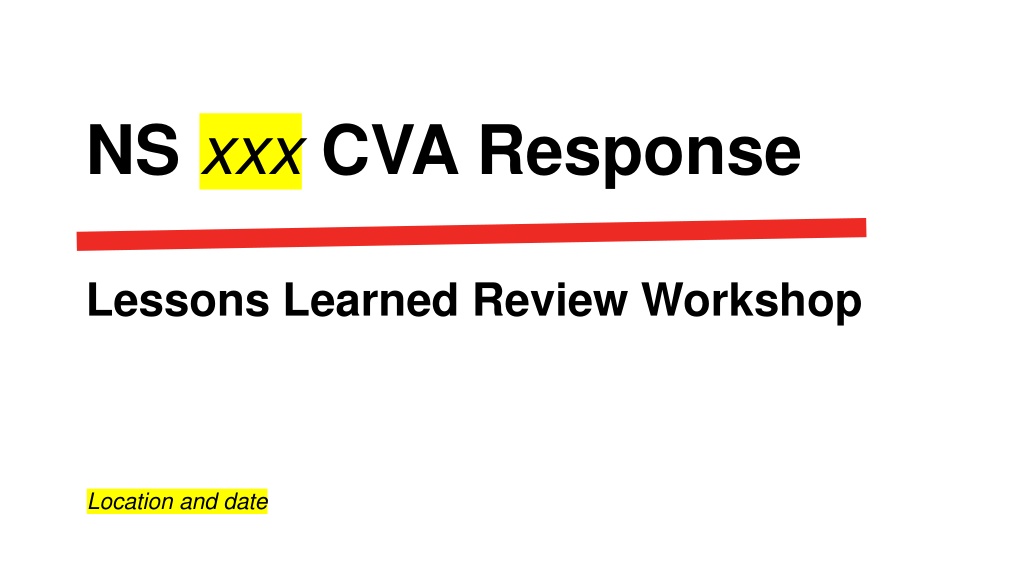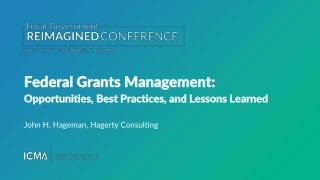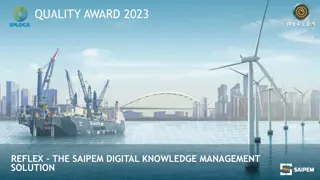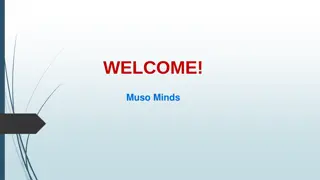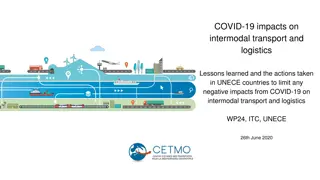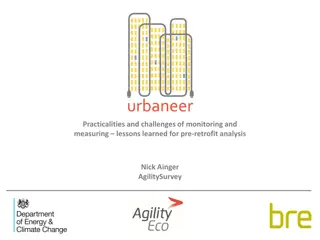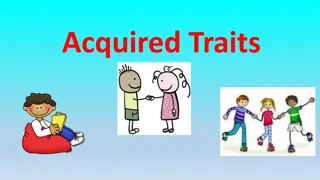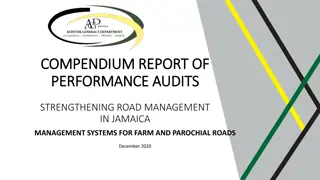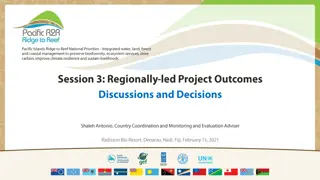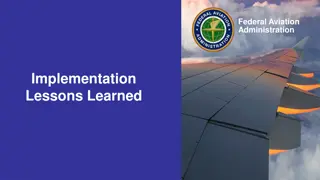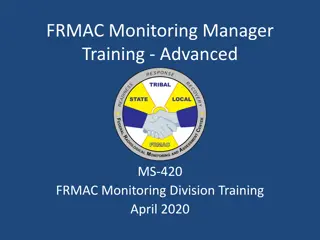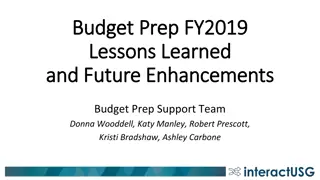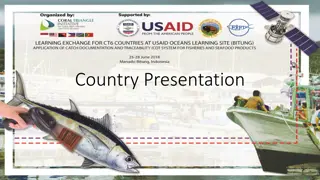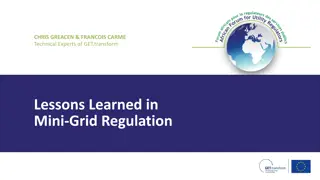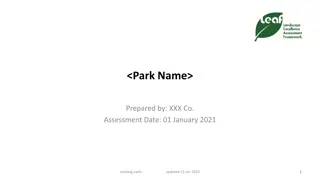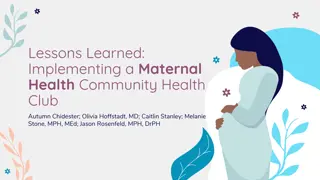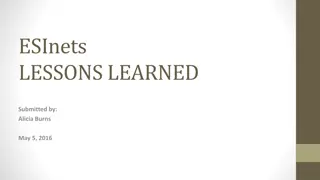NS.xxx Lessons Learned Review Workshop Insights
Explore the NS.xxx CVA response workshop's objectives, methodology, process versus impact monitoring, evidence sources, ways of working, and more. Discover how this review aims to capture strengths, address shortcomings, and improve FSL programming effectively.
Download Presentation

Please find below an Image/Link to download the presentation.
The content on the website is provided AS IS for your information and personal use only. It may not be sold, licensed, or shared on other websites without obtaining consent from the author. Download presentation by click this link. If you encounter any issues during the download, it is possible that the publisher has removed the file from their server.
E N D
Presentation Transcript
NS xxx CVA Response Lessons Learned Review Workshop Location and date
Agenda Day One (Insert agenda)
Agenda Day Two (Insert agenda)
Objectives of the Review To capture learning from the NS xxx response, both strengths and shortcomings. To systematically use this learning to assess the organisational system through which sectoral outcomes are delivered through CVA, across the project cycle. To identify priorities for improving FSL programming both in the immediate term and in the medium term To ensure that the right people, get the right assistance, in the right time, in the right way, with risks managed.
How? A brief look at the methodology Right Time Right People Right Assistance Right Way Right Risks Capacity of NS
Process versus impact Process monitoring : to ensure that the programme is appropriate and relevant to people s needs; that it is implemented in the way that was intended Impact monitoring : to ensure that the programme is having the intended impact and is minimising negative impacts more effectively and efficiently than are other types of programmes
The evidence we will use to generate our Lessons Participants experiences Qualitative data from communities PDM reports
Construction of the Response Timeline Two groups. 1st group creates a timeline on the wall with the main programme activities for the response. 2nd group check the timeline against the initial planning Timeline can be divided into project cycle steps (Assessment, Response Analysis, Implementation, M&E) 10 minutes, then 10 minutes review.
Right time? - - Include 2-3 summary slides from PDM (see next slide) + FGDs (10 mins) Plenary discussion about community views: do participants agree, anything to add (10 mins)
Right time? PDM and FGDs PDM FGD No major disparities, but frustration about not receiving cash instalment in December
Right time? Two groups. Group discussion on main reasons behind delays What would you do differently? Top 3 recommendations 20 mins
Assessment and Response Analysis: Part 1
Session Outline Session Objectives: To discuss and agree on whether CVA was the right modality for the response? (e.g. for food security) To reflect on how needs assessments and cash feasibility assessment have been carried out and the extent to which this provides the necessary information to inform evidence-based response analysis, based CVA on good practice To identify main gaps/positives and learning and propose main recommendations for future interventions
Right assistance? (modality) - - Include 2-3 summary slides from PDM (see examples) + FGDs (10 mins) Plenary discussion about community views: do participants agree, anything to add (10 mins)
Right modality? Would you have preferred to receive food/goods other than CVA? FGD: Kind of support is good Any support she accepts Any gifts she accept
Info from FGD Is CVA the preferred modality? Flexibility: People can make their own choices, according to their priorities and their preferences Everybody agrees that receiving CVA is better than in kind as they can buy whatever is needed People prefer CVA than in kind, as they can buy whatever is needed People in the community face many other problems, not only lack of food, that's why they prefer CVA, as this is the way to cope with other problems (school stationaries for the kids) People prefer CVA as they can buy whatever they want (uniforms and stationaries for kids, and food) CVA was good for small business in the community People prefer cash as they can buy whatever they want since they can access to other type of food (chicken wins, pasta, etc). Other people stressed the importance of being able to go to the hospital. Power transfer: people are empowered as they are responsible to make decisions on their future Helps the recovery process: many households invested in livelihoods Cash spent in the local markets
The assessment and response analysis process in the xxx response
Focus on assessments and response analysis Based on what has been presented, identify: a) b) what should have gone better c) at least 3 top recommended actions to keep or improve the quality of this phase. what went well Work in the same groups as before. Be ready to present your findings and recommendations 40 mins
Was CVA the right modality? Based on what has been presented so far: Identify at 3 reasons why CVA was or not the right modality. You can look at: - - - - - What s the best to meet the people s needs? Beneficiaries' preferences Timeliness Positive impact in the market Cost-efficiency 20 mins
Assessment and Response Analysis: Part 2
Session outline Session objectives: To reflect on whether the amount of the chosen modalities (e.g. cash + in-kind) for this response was the most adequate in view of the needs of the population. To identify positives and learning and propose main recommendations for future interventions
Right assistance? (amount) - - Include 2-3 summary slides from PDM (see examples) + FGDs (10 mins) Plenary discussion about community views: do participants agree, anything to add (10 mins)
The Right amount? - Number of meals NOW BEFORE
Info from FGD Was the amount provided enough for food needs? Most people consider that the amount was enough, as they can eat 3 times a day, while before they used to eat once a day. Others, were complaining about the amount received as N$800 cannot cover the needs of a family. Usually, families have to strategize how to expend the money Most people consider that the amount was enough to cover the food needs The cash received covers the basic needs People consider that the amount given was correct people consider that the amount given by NRCS was enough, and covered their basic needs Most people consider that the amount (N$ 800) was enough People consider that the amount given was correct, and covered their basic needs. On the other hand, there were people who warned that if they complained about the amount received they might be at risk of not receiving anything else Most people consider that the amount was enough, and covered their basic needs, although it wouldn't hurt to increase it a little more
Focus on assessments and response analysis Based on what has been presented and on the previous activity, identify: a) b) what should have gone better c) at least 3 top recommended actions for improvement what went well Work in the same groups as before. Be ready to present your findings and recommendations 40 mins
Focus on analysis stage (transfer value/amount Group Activity: Group 1: to compare advantages and disadvantages of a fixed amount versus a variable amount Group 2 : How often should the CVA be distributed: weekly, monthly, every two months? And should it be adapted to in line with changing market prices?
Risks - 3 classifications: contextual, programmatic, institutional Contextual: External to the organisation: political, economic, environmental, etc. E.g. Price increases due to global/national inflation, conflicts/displacement Programmatic: Failure to meet programme objectives and/or potential harm caused to others E.g. Inflationary risks caused by the programme: more buyers and limited supply can cause price increases Internal to the organisation: fiduciary issues, financial losses due to corruption, etc. E.g. Fraud and reputation risk for the organisation
Risks - The seriousness of a risk is determined by two factors: the likelihood (probability) that a risk will occur the impact (consequences) of the risk, when it has occurred
Risks Impact Negligible (1) Minor (2) Moderate (3) Severe (4) Critical (5) Likelihood V. unlikely (1) 1 2 3 4 5 Unlikely (2) 2 4 6 8 10 Mod. likely (3) 3 6 9 12 15 Likely (4) 4 8 12 16 20 Very likely (5) 5 10 15 20 25
Risks Exercise - - - For the forthcoming CVA project what are the top 3 risks? What are the key mitigating actions? Based on this, do you think using cash is feasible? Why? Or why not?
Implementation and Monitoring: Part 1
Session outline Outcomes: Right People? To reflect on whether the population and households targeted were the most in-need. To recap on how targeting and registration processes were done To assess how CEA was mainstreamed throughout the operation To identify main gaps/positives and learning and propose main recommendations for future interventions
A brief recap on targeting approaches and mechanisms - Targeting approaches: - - - Geographical Blanket Vs Targeted distributions Household Vs Individuals - Targeting criteria: vulnerability, social welfare, specific groups etc - Targeting mechanisms: community-targeting, self-targeting, categorical- targeting
Focus on targeting and registration Group Activity: two groups focus on targeting, the other two on registration Identify a) On hindsight, was there any other targeting criteria/mechanism that would have been more adequate for this response? b) Could have beneficiaries registered been registered differently? Mention at least 3 top recommended actions to improve the quality of this phase next time. (30 mins)
Right people? (targeting) - - Include 2-3 summary slides from PDM (see examples) + FGDs (10 mins) Plenary discussion about community views: do participants agree, anything to add (10 mins)
Info from FGDs - Targeting Those who received aid deserve it but other targeting options to consider, but fairer? Participants believe that all people included in the programme deserve it, as they were the most affected by the drought and they depend on farming Indunas should have set the selection criteria Tthere is people who receive a small grant from the government but who are poorer than some of the beneficiaries of the Red Cross it s not fair Participants believe that all people included in the programme deserve it Most communities All members in the community should have received assistance from the Red Cross
Info from FGDs - Registration Orderly? or affected by communication issues? Not everyone was properly informed about the project and the selection process, and that is why many households (in different villages) have not been assisted by the programme People claim they were not informed in advance of the type of help they would receive There was too many people meeting the selection criteria and not everyone could benefit The community and the Indunas were involved in the selection process All people included in the programme deserve it, and they pointed to the Induna as the key to this
CEA video - https://www.youtube.com/watch?v=k5Gja3aIZzA&list=PLrI6tpZ6pQmTuWgH 38XkEoLGjZytfUdAR&index=2&t=0s
